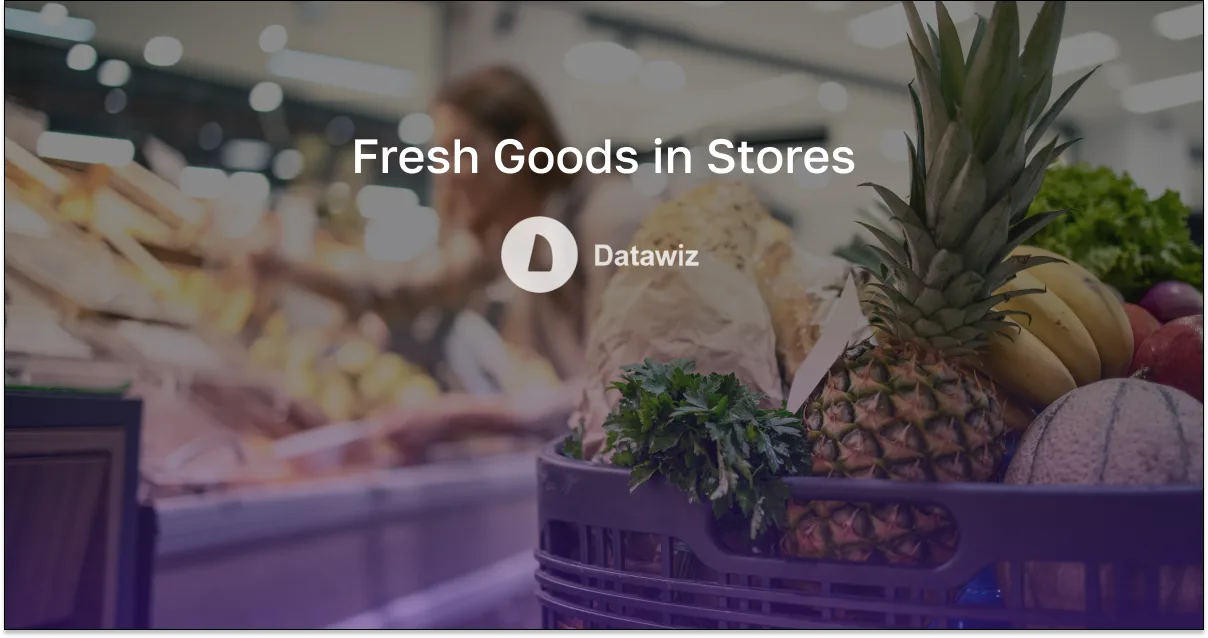Fresh goods in stores is one of the most important categories in retail, representing a group of perishable products that have a short shelf life and require special storage and transportation conditions. The Fresh category includes fruits and vegetables (FROV), dairy goods, meat, fish and bakery products.
In recent years, the demand for Fresh category products has increased remarkably. This is due to the trend towards proper nutrition and growing interest in natural products. Studies show that consumers who purchase Fresh fruits and vegetables increase theiraverage receiptby almost 80% compared to those who ignore this category. Moreover, Fresh product displays are usually located at the entrance of the supermarket, setting the tone for the entire shopping experience.
Features of the Fresh Category
Fresh products occupy a unique niche on the shelves of stores. Their difference from other categories lies in the following aspects:
- Short shelf life. Most Fresh goods have a limited shelf life, which requires a clear organization of supplies and warehousing.
- Seasonality. Many frosh products are only available at certain times of the year, which creates additional planning challenges.
- Sensitivity to external factors. Temperature, humidity and even lighting can affect product quality.
- High competition. Customers prefer Fresh products, which requires stores to constantly monitor quality.
These features pose a number of challenges, but proper management and the use of analytical tools can turn complexity into a competitive advantage.
How to Manage Fresh Merchandise In-Store
Managing Fresh merchandise is a complex but extremely important process that requires consideration of many factors, from demand forecasting to optimizing stock balances. To successfully manage this category, retailers must consider:
- Quality and freshness. Regular inspections, strict temperature control, adherence to storage conditions and state-of-the-art equipment are necessary to maintain a high level of quality. Separating products by type helps avoid cross-contamination. Neglecting these aspects can lead to significant losses due to write-offs.
- Presentable planogram. Fruit and vegetable displays should be bright and attractive. This helps to make the store stand out among competitors and attract new customers.
- Price Monitoring. Competitive prices are an important element of working with the category. Constant comparison with competitors helps to retain customer interest.
- Inventory management. Errors in order calculations lead to either empty shelves or unnecessary write-offs. To avoid this, it is important to implement automation systems and take into account parameters such as shelf life, demand dynamics and service levels. For example, FROVs (fruits and vegetables) require special attention due to their sensitivity to seasonal changes. A properly built assortment matrix will help minimize write-offs and increase turnover. It is important to organize competent rotation of goods according to the FIFO principle (first in, first out).
No less important aspect is staff training. Employees should understand the peculiarities of storage and layout of Fresh goods, be able to timely identify products that have lost their freshness, and offer customers only the best options.
Fresh Category in Retail: Pros and Cons
Pros of Fresh category:
- Attracting shoppers. Stores that offer a wide range of Fresh goods build consumer trust and loyalty.
- High margin. Despite their short shelf life, Fresh produce can generate significant profits due to high turnover.
- Strengthening brand image. Quality merchandise in the Fresh category are associated with customer care and sustainability.
- Traffic generating role. Dairy products, bread and other Fresh goods are often the reason for a customer's visit to the store.
Cons of the Fresh category:
- High risks of write-offs. Improper demand forecasting or storage violations lead to losses.
- Logistical complexity. The need to deliver quickly and maintain transportation conditions increases costs.
- Complexity of inventory management. Volatile demand and the impact of seasonality require careful planning.
To be successful in this category, retailers not only need to invest in technology, but also constantly analyze customer preferences. The solutions offered by the Datawiz platform enable in-depth analytics and effective management strategies.
Problem Solving With Datawiz
Using professional tools likeDatawizallows you to automate and optimize your Fresh category management. The analytics platform provides:
- Demand forecasting: minimizing write-offs and accurate restocking.
- Stock performance evaluation: increase demand for expiring items and engage shoppers.
- Real-timesales analysis: identify trends and manage assortment.
Fresh merchandise management is an art that requires a combination of experience, analytics and modern technology. It is this integrated approach that helps retailers successfully manage this important category and delight their customers every day
 What's new?
What's new?




 No credit card required
No credit card required